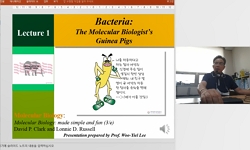Due to the technical difficulties and high cost for obtaining 3-dimensional structure data, sequence-based approaches in proteins have not been widely acknowledged. A motif can be defined as any segments in protein or gene sequences. With this simplic...
http://chineseinput.net/에서 pinyin(병음)방식으로 중국어를 변환할 수 있습니다.
변환된 중국어를 복사하여 사용하시면 됩니다.
- 中文 을 입력하시려면 zhongwen을 입력하시고 space를누르시면됩니다.
- 北京 을 입력하시려면 beijing을 입력하시고 space를 누르시면 됩니다.

인간 단백질 분석을 위한 빅 데이타 기반 RMF 방법 = A Big Data Based Random Motif Frequency Method for Analyzing Human Proteins
한글로보기https://www.riss.kr/link?id=A105981350
- 저자
- 발행기관
- 학술지명
- 권호사항
-
발행연도
2018
-
작성언어
Korean
- 주제어
-
등재정보
KCI등재
-
자료형태
학술저널
-
수록면
1397-1404(8쪽)
-
KCI 피인용횟수
1
- DOI식별코드
- 제공처
- 소장기관
-
0
상세조회 -
0
다운로드
부가정보
다국어 초록 (Multilingual Abstract)
Due to the technical difficulties and high cost for obtaining 3-dimensional structure data, sequence-based approaches in proteins have not been widely acknowledged. A motif can be defined as any segments in protein or gene sequences. With this simplicity, motifs have been actively and widely used in various areas. But the motif itself has not been comprehensively studied yet. The value of this study can be categorized in three fields in order to analyzing th human proteins using artificial intelligence method: (1) Based on our best knowledge, this research is the first comprehensive motif analysis by analyzing motifs with all human proteins in Protein Data Bank (:PDB) associated with the database of Enzyme Commission (:EC) number and Structural Classification of Proteins (:SCOP). (2) We deeply analyze the motif in three different categories: pattern, statistical, and functional analysis of clusters. (3) At the last and most importantly, we proposed random motif frequency(:RMF) matric that can efficiently distinct the characteristics of proteins by identifying interface residues from non-interface residues and clustering protein functions based on big data while varying the size of random motif.
국문 초록 (Abstract)
입체적 단백질 구조를 이용한 단백질의 분석은 3차원 데이터를 생성하기 위한 기술적인 어려움과 요구되는 높은 비용으로 인해 크게 발전하지 못하였다. 모티프(motif)는 단백질이나 유전자 ...
입체적 단백질 구조를 이용한 단백질의 분석은 3차원 데이터를 생성하기 위한 기술적인 어려움과 요구되는 높은 비용으로 인해 크게 발전하지 못하였다. 모티프(motif)는 단백질이나 유전자 염기서열의 단편(segment) 정보로 정의된다. 단순성 때문에 모티프는 딥러닝을 포함한 다양한 분야에서 활발하고 폭넓게 응용되고 있다. 그러나 모티프 자체에 대한 포괄적인 이해와 연구는 미미한 편이다. 이 논문이 가지는 중요성은 인공지능 기법을 활용하여 인간 단백질을 분석하는 방법으로 3가지 측면에서 찾아볼 수 있다.
(1) 현재 단백질 데이터 뱅크 (PDB)에 저장된 모든 인간의 단백질 구조를, 이에 상응하는 효소위원회 (EC)의 데이터베이스와 단백질의 구조적 특성에 따른 분류 데이터베이스 (SCOP)를 연동하여 단백질이 가지는 고유의 특성을 모티프를 응용한 새로운 방법으로 컴퓨터를 이용하여 분석한 최초의 종합적이고 심층적인 인간 단백질의 분석법이다. (2) 본 연구는 모티프에 의해 생성된 새로운 단백질의 특성을 계층적 클러스터링을 이용하여 단백질이 가지는 고유한 특징을 패턴 인식과 통계 그리고 단백질 기능 분석의 세 가지 범주로 단백질의 특성을 포괄적으로 분석한다. (3) 임의로 생성된 모티프가 단백질 내에서 가지는 빈도에 대해 빅 데이터를 활용하여 모티프의 길이를 다양화시킴과 동시에 접촉 염기와 단백질의 기능을 다각도로 분석할 수 있는 임의 모티프 빈도 (RMF)를 이용한 단백질 분석 방법론을 제안한다.
참고문헌 (Reference)
1 정희택, "데이터 마이닝을 활용한 효소 대사물의 분석" 한국전자통신학회 11 (11): 969-982, 2016
2 A. Bruckner, "Yeast Two-Hybrid, a Powerful Tool for Systems Biology" 10 (10): 2763-2788, 2009
3 O. Puig, "The Tandem Affinity Purification (TAP) Method : A General Procedure of Protein Complex Purification" 24 (24): 218-229, 2001
4 H. M. Berman, "The Protein Data Bank" 28 (28): 235-242, 2000
5 S. Xing, "Techniques for the Analysis of Protein-Protein Interactions in Vivo" 171 (171): 727-758, 2016
6 T. Sun, "Sequence-based prediction of protein- protein interaction using a deep-learning algorithm" 18 (18): 277-, 2017
7 X. W. Chen, "Sequence-based prediction of protein interaction sites with an integrative method" 25 (25): 585-591, 2009
8 V. S. Rao, "Protein-Protein Interaction Detection: Methods and Analysis" 2014 : 147648-, 2014
9 M. Werner, "Interphase cytogenetics in pathology: principles, methods, and applications of fluorescence in situ hybridization (FISH)" 108 (108): 381-390, 1997
10 J. Jeong, "A New Methodology For Identifying Interface Residues Involved In Binding Protein Complexes" University of Kentucky 2011
1 정희택, "데이터 마이닝을 활용한 효소 대사물의 분석" 한국전자통신학회 11 (11): 969-982, 2016
2 A. Bruckner, "Yeast Two-Hybrid, a Powerful Tool for Systems Biology" 10 (10): 2763-2788, 2009
3 O. Puig, "The Tandem Affinity Purification (TAP) Method : A General Procedure of Protein Complex Purification" 24 (24): 218-229, 2001
4 H. M. Berman, "The Protein Data Bank" 28 (28): 235-242, 2000
5 S. Xing, "Techniques for the Analysis of Protein-Protein Interactions in Vivo" 171 (171): 727-758, 2016
6 T. Sun, "Sequence-based prediction of protein- protein interaction using a deep-learning algorithm" 18 (18): 277-, 2017
7 X. W. Chen, "Sequence-based prediction of protein interaction sites with an integrative method" 25 (25): 585-591, 2009
8 V. S. Rao, "Protein-Protein Interaction Detection: Methods and Analysis" 2014 : 147648-, 2014
9 M. Werner, "Interphase cytogenetics in pathology: principles, methods, and applications of fluorescence in situ hybridization (FISH)" 108 (108): 381-390, 1997
10 J. Jeong, "A New Methodology For Identifying Interface Residues Involved In Binding Protein Complexes" University of Kentucky 2011
동일학술지(권/호) 다른 논문
-
건강관리 애플리케이션을 통한 타바타 운동이 뇌졸중 환자의 균형, 보행 및 일상생활 활동에 미치는 영향
- 한국전자통신학회
- 원영식
- 2018
- KCI등재
-
- 한국전자통신학회
- 오지완
- 2018
- KCI등재
-
비접촉 IoT 링거 교체 자동 알림 시스템 설계 및 구현
- 한국전자통신학회
- 이효승
- 2018
- KCI등재
-
광대역 전력선통신 기반 풍력발전기 너셀 내부 화재예방시스템 구현
- 한국전자통신학회
- 김현식
- 2018
- KCI등재
분석정보
인용정보 인용지수 설명보기
학술지 이력
| 연월일 | 이력구분 | 이력상세 | 등재구분 |
|---|---|---|---|
| 2026 | 평가예정 | 재인증평가 신청대상 (재인증) | |
| 2020-01-01 | 평가 | 등재학술지 유지 (재인증) |  |
| 2017-01-01 | 평가 | 등재학술지 선정 (계속평가) |  |
| 2016-01-01 | 평가 | 등재후보학술지 유지 (계속평가) |  |
| 2015-01-01 | 평가 | 등재후보학술지 유지 (계속평가) |  |
| 2013-01-01 | 평가 | 등재후보 1차 FAIL (등재후보1차) |  |
| 2012-01-01 | 평가 | 등재후보학술지 유지 (기타) |  |
| 2011-01-01 | 평가 | 등재후보 1차 PASS (등재후보1차) |  |
| 2009-01-01 | 평가 | 등재후보학술지 선정 (신규평가) |  |
| 2007-08-27 | 학회명변경 | 한글명 : 학국전자통신학회 -> 한국전자통신학회영문명 : The Korea Insitute of Electronic Communication Sciences -> The Korea Institute of Electronic Communication Sciences |
학술지 인용정보
| 기준연도 | WOS-KCI 통합IF(2년) | KCIF(2년) | KCIF(3년) |
|---|---|---|---|
| 2016 | 0.89 | 0.89 | 0.79 |
| KCIF(4년) | KCIF(5년) | 중심성지수(3년) | 즉시성지수 |
| 0.77 | 0.76 | 0.698 | 0.27 |





 ScienceON
ScienceON






